Shanghai is a huge city with so much to see and do. Deciding what to do isn’t easy, so this Shanghai 5-day itinerary is here to help you…
This city is a bucket list destination for many. And, that’s not surprising given the spectacular skyline, incredible food and important history.
It’s a place where historic buildings and towering skyscrapers sit side by side. Where cultures collide and millions of people go about their lives.
Despite the international and modern feel, visiting Shanghai can still be overwhelming.
As such, this itinerary and guide is full of practical advice and recommendations for your Shanghai itinerary… All based on my experience in this incredible city!
Some of the links below are affiliate links, meaning, at no additional cost to you, I may earn a small commission if you click through and make a qualifying purchase.
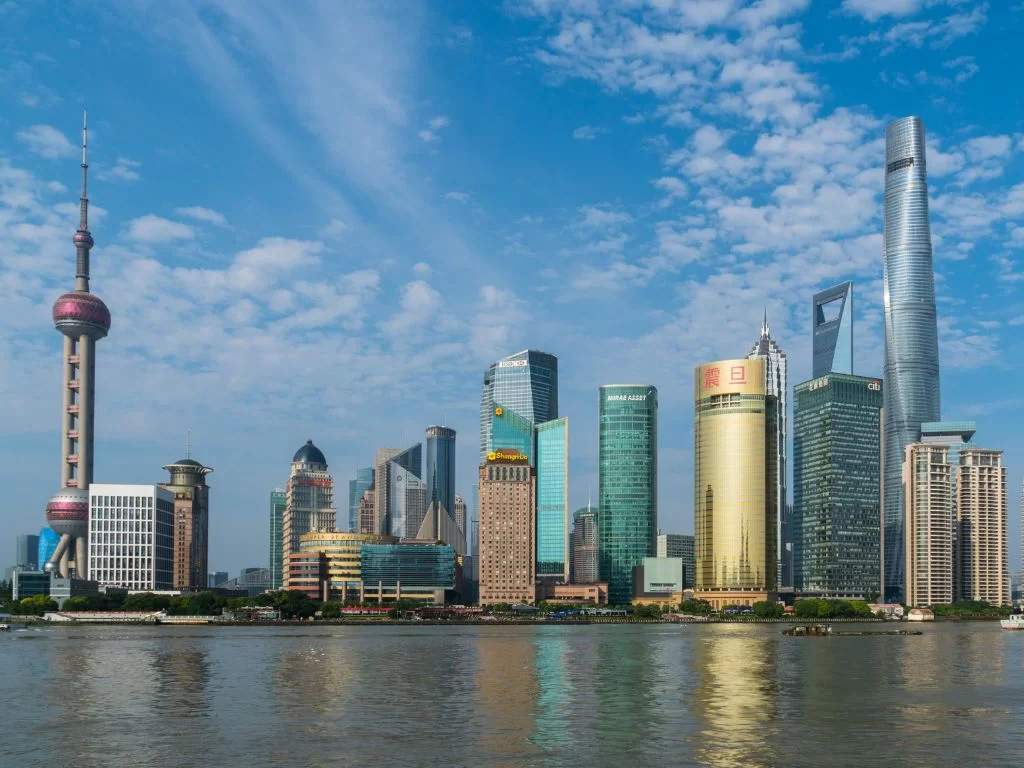
Visiting Shanghai in 2024
China is only just reopening following years of strict measures and travel restrictions. As such, few international visitors have been there since early 2020.
And Shanghai will have inevitably changed. They’ll be new places and some will have closed.
Because of this, I’ve updated this guide as much as possible with the information I can find. But, some of it will be out of date.
Plus, it will take a while for tourist numbers to recover. The expat community is just a fraction of what it was before and it’s not as easy to get into China at the moment, as it was before.
Tourist Visa for China
Since early 2023, the China transit visa is back – allowing tourists from about 60 countries to stay in the country for up to 6 days.
However, things change quickly. For the most up-to-date information and testing requirements, check out the latest advice on your country’s government website.
If you’re not eligible for a transit visa, you’ll need to apply for a tourist visa from an embassy.
What You Need to Know Before Visiting Shanghai
It can be overwhelming to go on a vacation to Shanghai where the culture, language and laws are so different. But with a little preparation and research into what to expect, you can quickly get to grips.
Here are some key bits of information to help you have the best time…
Summers in Shanghai are Scorching Hot
In July and August, temperatures are often in the high 30s. And, when combined with smoggy or humid days can be really insufferable.
If you have a trip planned in the summer, you’ll want to minimise walking and time outdoors. Consider afternoon naps!
Say Goodbye to Google Maps
You’ll need to find a maps app that isn’t Google.
I used Maps.me, which worked perfectly and had all the functionality of Google Maps. This includes being able to star/favourite places and use pre-downloaded offline maps.
Cash is King for Tourists
Shanghai still operates a predominantly cash-based society for tourists. This is because most people use an app for payments that requires a Chinese phone number.
Withdraw cash from banks or ATMs in the city as you’ll need cash for restaurants and tourist attractions. The currency is the Renminbi, which uses units of Yuan.
ATMs are usually inside banks or buildings that have 24-hour access – and even have individual cubicles for total protection.
The availability of ATMs in Shanghai means you don’t need to carry large amounts of cash on you. Find a bank account that offers a 0% transaction fee on foreign withdrawals – then make small, regular withdrawals.
You’ll Feel Cut Off from the Outside World
Pretty much all Western news sites are banned in China. As well as all Western social media networks.
The ban on Google also means Android users can’t use Google Pay, Google Drive etc.
Get a VPN to keep an eye on the news and do research about where to go in Shanghai. Although these aren’t guaranteed to work.
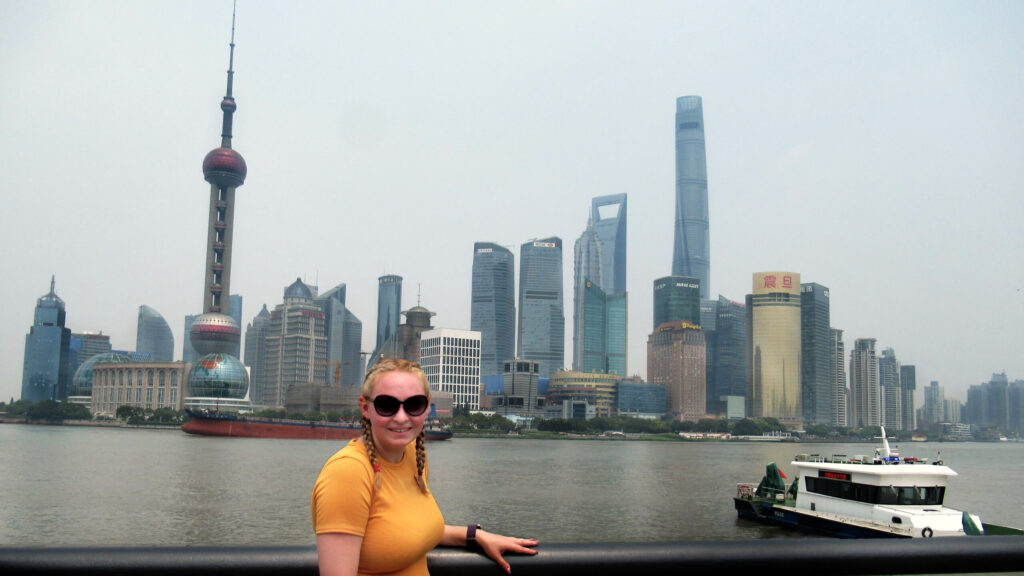
Common Shanghai Myths: Debunked
Myth: You’ll have to use squat toilets in Shanghai
Reality: Not true, I found seated toilets in every public toilet block. Hotel bathrooms always had seated toilets.
And, while some public toilets did have a mix of both, you can simply choose what you are comfortable with. Importantly, and in my experience, accessible toilets offered the best chance of finding a seated toilet.
However, public toilets never provided toilet roll – so make sure to bring your own (or tissues).
Myth: The language barrier will be huge and will affect your experience in Shanghai
Reality: Shanghai is the Chinese city with the most foreign expats. As a result, if something is going to be translated into a second language, then that will be English.
The airports, Metro, museums and tourist attractions are very foreign-tourist friendly.
For local restaurants, the availability of an English menu was hit and miss. And most of the time the staff didn’t speak English. You can either learn the names of foods, use translation apps, or just eat somewhere else.
Myth: All the food is (very) spicy
Reality: Incorrect.
I think this misconception often comes from people who try to find Western food in China, as often this is spicier than what you’d find at home.
But, this is because the restaurants are targeting Chinese people who want to eat Western food rather than Westerners themselves, and as such have catered to local palates.
Having said that, not all Chinese food is spicy. And, compared to Western eateries, a greater proportion of food is freshly prepared to order. So you can ask for less or no spice if you would prefer.
Myth: China is dirty
Reality: This is also really far from the truth. Having first visited China back in 2010, and then twice more in recent years, I have only ever found it to be a clean country, overall.
The streets and Metro of Shanghai were free from litter and all the tourist spots were clearly regularly cleaned.
Historically, spitting was common in China – in public, private, indoor and outdoor places. But, in recent years the Chinese government have been running marketing campaigns to reduce spitting.
With this, they hope to increase the appeal of China to Western tourists and also make Chinese tourists more sanitary visitors to foreign countries.
Myth: Everywhere is overcrowded
Reality: Shanghai is the second-largest city in the world. Estimates of the city’s population range between 24 to 27 million – rising up to 34 million people when you consider the wider metropolitan area.
Shanghai is also a popular domestic tourist destination, attracting citizens from all across the most populated country on Earth. So, if you’re expecting to have The Bund to yourself even by going at 6am, then I’m going to have to disappoint you.
However… Whilst Shanghai is busy, it is not overcrowded. Unless you are visiting on national holidays then you can still enjoy everything on this Shanghai 5-day itinerary without feeling claustrophobic.
Find the best prices and the best dates with flight comparison sites like Skyscanner!
Make sure you use tools such as ‘Add nearby airports’ and set your departure airport as wide as possible (you can just put the United States or UK, for example) to see the cheapest cities to fly from! Check prices for your trip here…
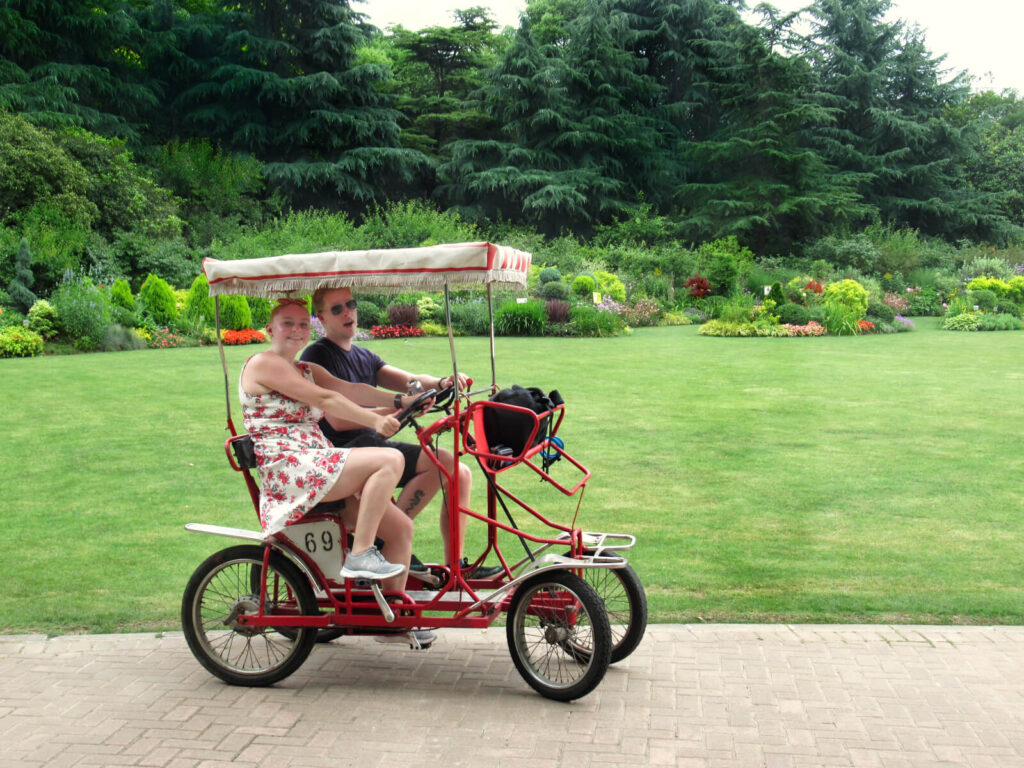
How to get around in Shanghai
Using the Metro in Shanghai
The Metro system is going to be your best friend for the 5 days you’re in Shanghai.
It’s cheap, quick and requires absolutely no knowledge of Mandarin! Think of it as a cleaner, cooler and cheaper version of the London Underground.
Ticket prices are based on the distance covered, with fares ranging from 3 to 15 Yuan ($2.20). Given that the 15 Yuan fare is for distances of over 116 km, it’s impressively cheap!
Additionally, one-day tickets are available for 18 Yuan ($2.60), with a three-day ticket costing 45 Yuan ($6.50).
Tickets can be bought from self-service machines that can be changed to a language that suits you. Signs on trains, platforms and in the station are also in English as well as Mandarin.
Taxis and Buses in Shanghai
Since the 17 Metro lines cover most of the city, it’s unlikely you’ll need to use taxis or buses during your 5 days in Shanghai. Taxi prices start at 14 Yuan increasing by 2.5 Yuan for each kilometre and are higher at night.
To avoid confusion, anxiety and unintentional city tours – having a screenshot or printed version of the place you are going in Mandarin is good to show the taxi driver.
Certain places are easy to cover on foot, such as The Bund and Nanjing Road. But Shanghai is huge and there can be large distances between places.
Given how cheap and quick the metro is, it makes for an easy and convenient choice over long walks. Especially in the heat of summer or cold of winter.
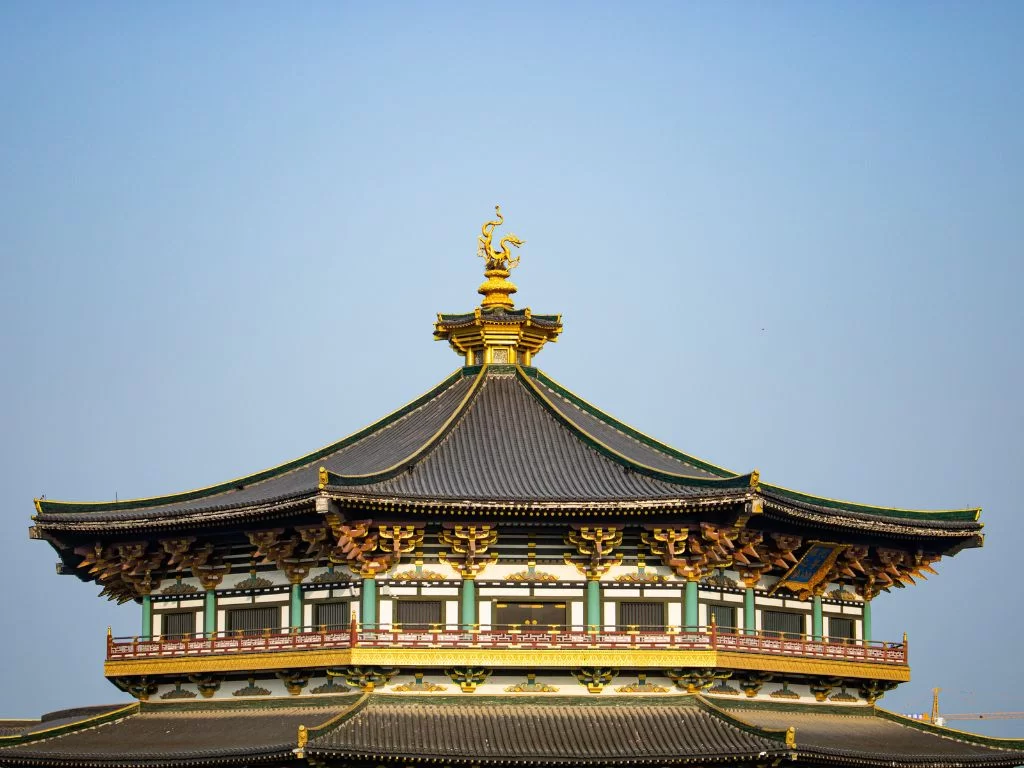
Where to Stay in Shanghai
Pretty much all of the best things to do in Shanghai are located in the centre of the city. As such, I recommend staying as central as possible to make the most of your time here.
Generally speaking, staying near a Metro Line 2 station is best as this line links pretty much everywhere you’ll want to go.
Like all cities, Shanghai has a full range of options from budget to luxury accommodation for your 5 days in Shanghai.
Hostels in Shanghai
The city doesn’t have a big hostel scene and backpackers aren’t too common here. But, there are still a couple of cheap and basic hostels.
Meego Youth Hotel has private rooms and dorms. It’s surrounded by grocery stores, bars and restaurants. The metro is a few blocks away.
Alternatively, Hidden Designer Youth Hostel is located right by People’s Park and Nanjing Road. With a metro station also very close by.
The hostel has private rooms and dorms and allows check-in from midday.
Budget
If you’re looking for cheap and cheerful, there are plenty of options in Shanghai.
Conveniently located near the metro, Shanghai Fish Inn Bund has sleek rooms and all the essential facilities. The executive suite even comes in a very budget-friendly price range, so it can be a great place to upgrade for a little extra luxury.
Another option is Seventh Heaven Hotel, located a stone’s throw from the Nanjing Road pedestrian shopping street. As well as being 5 minutes from the metro, the hotel also has a cabaret, beauty salon and massage parlour!
Mid-range
Shanghai is full of mid-range options and a lot of them have pretty good facilities.
One such option is the Radisson Blu Hotel Shanghai New World, situated on the northern side of People’s Park. This hotel is centrally located just metres from the metro and Shanghai’s famous shopping street.
All stays come with free use of the fitness centre and indoor swimming pool! Additionally, if that wasn’t enough, it also has a revolving restaurant on the 45th floor!
Luxury
If money is no object or you just fancy treating yourself to a night of luxury, you’ll want to check out The Ritz-Carlton Shanghai, Pudong.
Located among the skyscrapers in Pudong, this hotel is a slice of luxury. This hotel features an indoor swimming pool with panoramic views of the city (free use as a hotel guest).
Plus, all rooms have city views. And, even the cheapest room has a standalone bathtub, an extra-large bed, floor-to-ceiling windows and over 500 square feet of space!
How many days do you need in Shanghai?
5 days is a good amount of time to see the best Shanghai has to offer, without having to rush around like mad! From food to history to culture, the city has something for everyone.
You could see the top attractions in 2 action-packed days. With 3 or 4 days, you’d probably still have to be selective about what you see and do.
Of course, you won’t see the whole city in 5 days. But, in this time, you’ll start to get a real feel for the culture and way of life. And, get to see the best spots in the city.
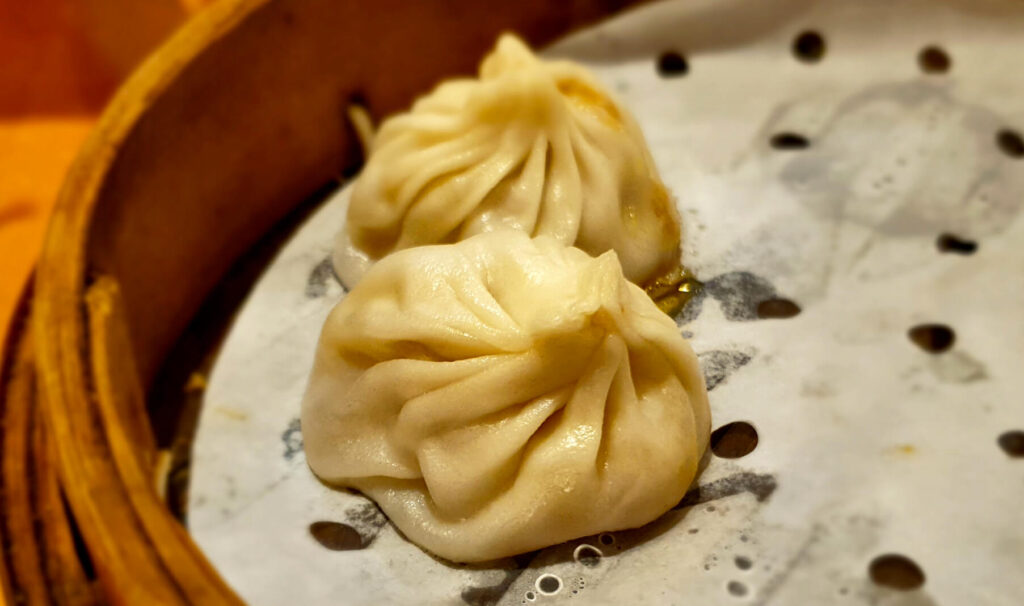
What to Eat in Shanghai
Shanghai is full of amazing restaurants and street food stalls. And, there are a few foods that you have to try! All of these can be found all across Shanghai, so when you’re in a restaurant keep an eye out for them.
Xiaolongbao
Xiaolongbao is soup dumplings made with pork and/or crab meat, most commonly. The soup is made in advance and then refrigerated to turn into a jelly, in this state it can then be wrapped in the outer shell.
The dumplings are steamed and the jelly melts back to soup inside! Be careful when you eat them though as you don’t want to burn the inside of your mouth!
Jian Bing
These are, in essence, crepes that come with a variety of toppings. Normally including egg, spring onions, spicy sauce and a rice cake/cracker.
Additional sweet and savoury options also vary depending on the seller. Jian Bing is commonly sold in small, hole-in-the-wall food outlets on the streets of Shanghai.
Cong you Bing
Cong You Bing is a popular savoury snack across much of China. These scallion (spring onion) pancakes are available in restaurants and street-side stalls. Cheap and tasty!
Shengjianbao
Shengjianbao is fried pork buns, with a much thicker and doughier outside than xiaolongbao.
Yang’s Dumplings restaurants are commonplace in Shanghai and are a perfect place to try these bao buns.
Shanghai 5-Day Itinerary: Day 1
Day 1 of your Shanghai 5-day itinerary should be spent exploring the heart of the city! Use this time to get your bearings in this vast city and it’ll make your next 4 days in Shanghai much easier.
Consider taking a walking tour for a guided view of the city, but you can do it all yourself.
Key stops: People’s Square & Park, Nanjing Road, The Bund, Yu Gardens and the Old City.
People’s Square & People’s Park
Start your day in People’s Square and People’s Park. This is a popular meeting spot for locals in Shanghai.
You’ll find yourself immersed in the Shanghainese culture pretty quickly. Hence, this is the perfect first stop for your Shanghai trip itinerary.
Nanjing Road Shopping Street
Next, you’ll want to visit Nanjing Road, which starts at the northeast corner of People’s Park. It’s full of national and international brand shops and restaurants.
On a warm day, you’ll want to stop for ice cream along this street. Or perhaps a hot drink in winter.
Nanjing Road runs all the way from People’s Square to the next stop and is an absolute must-do in Shanghai…
The Bund
Home of the most famous viewpoint in all of Shanghai is The Bund! This long, riverside promenade offers spectacular views of the Lujiazui skyscrapers.
Once you’ve finished at the city’s most popular photo spot (it’ll be hard to drag yourself away from the mesmerising view), head south to the next stop.
Make sure you also visit the Bund after dark, the lit-up skyline is one of the best things to see in Shanghai – simply spectacular!
Yu Gardens
Just a 20-minute walk south along The Bund is the popular and beautiful Yu Gardens.
The small entrance fee (30/40 Yuan [off-peak/peak]) is well worth it to see the 5 acres of gardens, water features and traditional Chinese-style architecture.
Shanghai Old City
The gardens are located in the heart of Shanghai Old City, a great place for exploring.
From the city wall to temples, and streets full of local sellers and shops, it’s a very different experience from central Shanghai.
Take a food tour
Finally, finish off Day 1 of this Shanghai 5-day itinerary with a food tour.
Guided tours are good as they allow you to visit local eateries and be introduced to local cuisines without a language barrier. I went on a tour with Free Tour Asia, although there are other operators available at a range of costs.
> > > RELATED POST: If you only have 1 day in Shanghai, I recommend following this Shanghai one-day itinerary to see the best of the city!
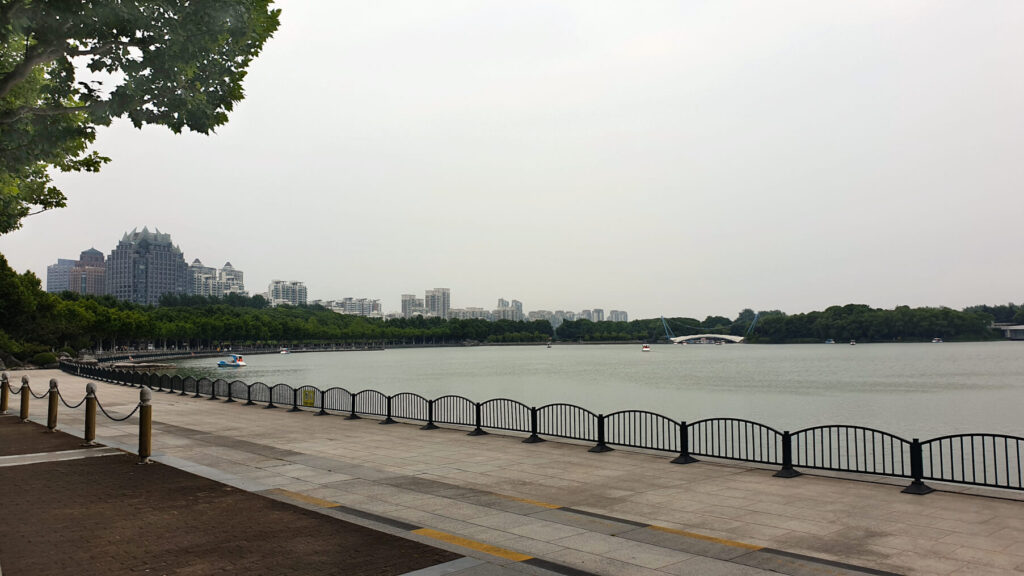
Shanghai 5-Day Itinerary: Day 2
Day 2 of 5 in Shanghai explores the Lujiazui area of the city. It’s home to some of the most popular Shanghai tourist attractions.
Known for its soaring skyscrapers, the architecture and engineering in Lujiazui will leave you in awe!
Key stops: Oriental Pearl Tower, Science Museum, Century Park.
Shanghai Oriental Pearl TV Tower
Put your head in the clouds and journey to the top of some of the tallest buildings in the world.
The Shanghai Oriental Pearl TV Tower provides the full visitor experience with a 360-degree transparent Skydeck at 259 metres up as well as an observation deck at 351 metres.
Other options for skyscrapers include the Shanghai World Financial Center, known by locals as ‘the bottle opener’ for its distinctive look.
The building has three observation floors – including a transparent floor deck on the 100th floor, 474 metres up!
Another option is the Shanghai Tower – the second tallest building in the world at 623 metres high!
The observation floors are located around 550 metres above the ground – for stunning views of Shanghai (or the clouds). Given this, choose a clear day to ascend the Shanghai Tower for the best views.
Science & Technology Museum
Next up, is the Shanghai Science and Technology Museum. It’s three stops along on the Shanghai Metro from the TV tower.
This vast museum covers all areas of science from pre-historic animals to space exploration. There’s something for everyone here and you can easily spend a couple of hours seeing all the exhibitions.
Century Park
Located just a stone’s throw from the science museum is Century Park. This huge, inner-city park is a world away from the skyscrapers.
In the park, you can hire bicycles or pedalos, you can visit the small funfair, or you can just explore the many gardens and lakes. The perfect slice of nature in a busy metropolitan city!
If you exit the park through Exit 7 on the south side then you’ll pass the Century Mart on your way to Century Park Metro station. Is it really a trip abroad without a trip to a local supermarket for unique snacks and drinks? I would say not!
Did I buy several bottles of salted caramel flavour Pepsi? Absolutely, yes! Was it sickeningly nice? Also, yes!
Shanghai 5-Day Itinerary: Day 3
For the mid-point of this Shanghai itinerary, it’s time for a day trip to Hangzhou.
This beautiful city is one of the best day trips from Shanghai and is located just less than 200 kilometres southwest of Shanghai. But, thanks to the high-speed train network, the journey time is just 1 hour!
Key stops: Hangzhou & West Lake.
The high-speed trains run from Shanghai to Hangzhou from Hongqiao Railway Station. Which is located on Line 2 of the metro.
Trains run several times an hour from 6 am to 9.30 pm.
You can buy a ticket from the station – but don’t expect the staff to speak any English. Alternatively, you can book your train tickets in advance and online using 12go.asia – a specialist transport agency. Remember to pack your passport, as this is required to travel on trains in China.
Once you arrive at Hangzhou East Railway Station (Hangzhoudong), take the Metro (Line 1) 5 stops to Fengqi Road. From here, it’s just a 10-minute walk to West Lake – the absolute jewel of Hangzhou.
West Lake in Hangzhou
West Lake is the hub of the best things to see in Hangzhou. There are many attractions, viewpoints and photo spots on the shores.
With stops for attractions, photos and breaks, it’ll take you most of the day to walk the perimeter of the lake. But, rest assured, this is the best place to be in Hangzhou.
All around the lake, you’ll find pavilions, parks, bridges and walking trails. There are viewpoints and photo spots almost everywhere. And you can even take a trip on the lake with the pleasure boat service.
By early evening, you’ll want to be back on the eastern side of the lake to watch the sunset in the west. This is a popular activity at West Lake, so you won’t be alone, but that won’t detract from a magical sunset.
Give yourself enough time to navigate the Metro back to Hangzhou Station and get your train back to Shanghai.
Given everything that we’ve covered so far, you’re only 60% of the way through this Shanghai itinerary! Two more action-packed days to come!
> > > RELATED POST: Looking for a shorted Shanghai trip itinerary? This Shanghai 3-Day Itinerary makes sure you get to visit the best the city has to offer in just a few days!
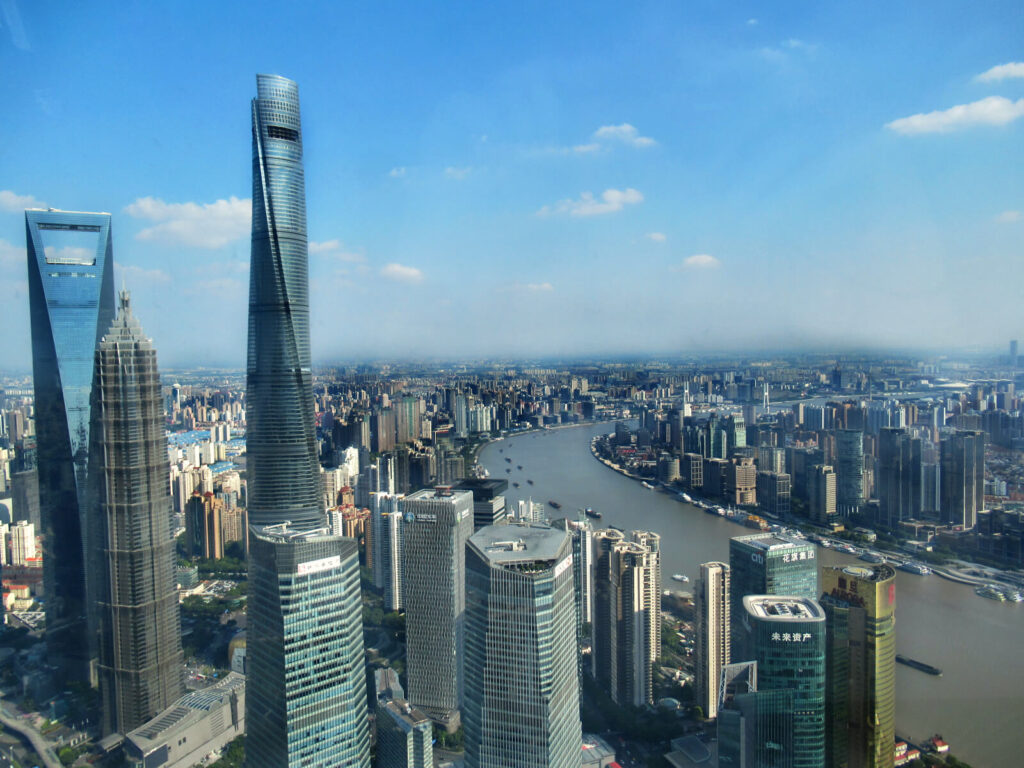
Shanghai 5-Day Itinerary: Day 4
Day 4 and we’re back exploring some of the best places to visit in Shanghai – it’s what we came to do after all! Today’s itinerary is rather cultured as we visit a host of temples and museums.
Key stops: Jing’an Temple, Food Market, Jade Buddha Temple, History Museum, Urban Planning Museum, Shanghai Museum
Jing’An Temple
First up is the beautiful Jing’an Temple. Which is served by a Metro stop aptly named ‘Jing’an Temple’ on Lines 2 and 7.
Surrounded by skyscrapers and modern-day buildings, this temple complex is just shy of 2000 years old! Although, there have been more recent reconstructions and restorations.
Huxi Mosque Muslim Food Market
Next up, is the Huxi Mosque Muslim Food Market, which runs every Friday from 10 am until 3 pm.
Here, you can sample many delicacies of the Uyghur people such as lamb skewers and freshly baked bread.
The market is located on Changde Road, just a short walk from the Changshou Road Metro Station. Which is two stops north of Jing’an Temple on Line 7.
Jade Buddha Temple
A 20-minute walk away from Huxi Mosque is the Jade Buddha Temple, home to a giant jade-green Buddha statue.
This impressive temple complex is a great place to learn more about Buddhism. And you can easily spend at least an hour here exploring the many parts.
Museums
From the Jade Buddha Temple, you should head two Metro stops away to the Shanghai Natural History Museum (Line 13). This tourist-friendly museum is a great place to escape the outside weather for a couple of hours while learning a thing or two.
Although, there are a large number of stuffed (preserved) animals. Which do look quite creepy and perhaps aren’t as accepted in Western culture these days.
A 30-minute walk from the history museum will bring you to the Shanghai Urban Planning Museum.
It isn’t the biggest of museums in Shanghai. But the main attraction is a complete model version of the city of Shanghai. Featuring every building and every road, to scale!
The museum also showcases the rapid development of Shanghai into today’s status as the world’s most populated city!
If you’re not completely sick of museums of this point, then just across the road is Shanghai Museum. This free museum contains 1000s of artefacts and artworks providing a snapshot into China’s history and culture.
Shanghai 5-Day Itinerary: Day 5
For the final day of your Shanghai China itinerary, I’d recommend a slightly easier day (i.e not visiting 5+ attractions in one day!)…
Two potential options: Disneyland Shanghai or Zhujiajiao water town
Disneyland Shanghai
Like all Disney parks around the world, Disneyland Shanghai is a truly magical place and fun for all the family!
If you book tickets at least 7 days in advance online then you get a discount and avoid queuing on the day. Generally, weekends are peak times and weekdays are regular prices.
Despite the high prices, entrance to the park is much cheaper than for other Disney parks around the world (including Hong Kong).
Disneyland Shanghai is the last stop on the eastern end of Line 11 of the Metro. From People’s Square Station, you’ll need to take Line 8 nine stops south to Oriental Sports Center. Then, you’ll need to change to Line 11 for the eight stops to Disneyland.
Zhujiajiao Water Town
Zhujiajiao is located to the west of the city and is an ancient water town. Much like its more famous counterpart, Venice.
The town makes for a great day trip from Shanghai as you can explore the canals, old streets, bridges and take gondola rides.
As the town is a dedicated tourist area, it can get very busy on weekends and public holidays. So I recommend visiting during the week if possible.
You can reach Zhujiajiao via the Metro. You’ll need to take Line 2 all the way to Hongqiao Railway Station stop, then change to Line 17.
After the 11 stops, you’ll arrive at Zhujiajiao Metro Station, which is a 15-minute walk from the water town.
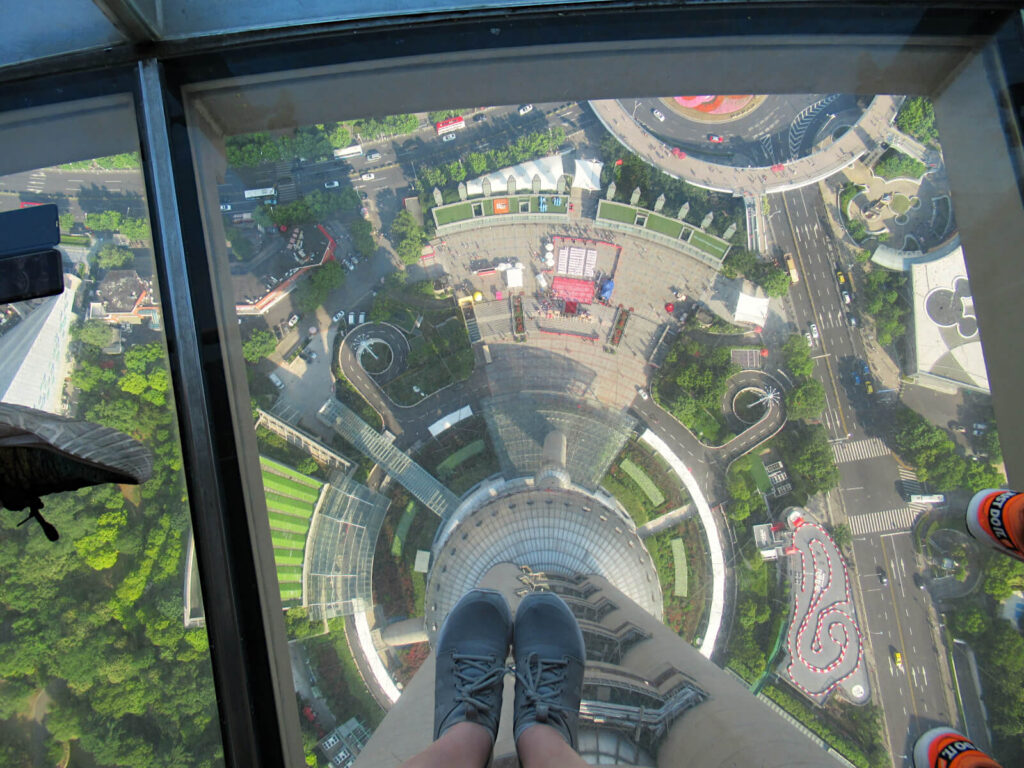
Is Shanghai Safe for Tourists?
Assuming you apply the usual rules of common sense, then yes, Shanghai is a safe city for visitors.
Like anywhere that is popular with tourists, exercise reasonable caution about pickpockets. Avoid putting your phone or wallet in your back (or visible) pockets and make use of hotel safes for valuable items.
Additionally, visitors to China are required by law to carry their passports on them at all times. As such, I recommend finding a safe internal pocket within your bag for this.
Is Shanghai Tourist Friendly?
The city attracts tourists from across China and across the world. But, tourism has been almost non-existent for the last 3 years.
Given the hardships and measures the city had to endure, it’s hard to say how welcome visitors will be made to feel as the country opens its doors.
However, the city has a good tourism infrastructure and will continue to attract visitors for years to come. And if 2020 has taught us anything, it’s to travel while you can.
Is Shanghai an Expensive City?
Shanghai seems to have a reputation as an expensive city. While it would be easy to spend your money here, there are plenty of budget options. And what you do spend on, you get much more value for money than in the West.
Both food, travel and accommodation are fairly cheap. Meaning, that you can make the rest of your trip as cheap or expensive as you want.
For those on a budget, choose from the many free activities, take the metro and eat locally.
But if you want to spend more money there are plenty of tours, western restaurants and international brand shops.
And, for most people visiting Shanghai, they’ll be somewhere in the middle. So, you can choose which experiences are important enough to you, to spend money on.
Is Shanghai worth visiting?
If you like big cities and tall skyscrapers and don’t mind immersing yourself in a totally different culture and language, Shanghai is for you.
In this city, east meets west and historical landmarks sit in the shadows of modern engineering masterpieces. It’s busy, it’s big and it’s every bit worth visiting!
If you have any questions or want any more information drop a comment below and I’ll get back to you!
Prices and offerings mentioned are correct to the best of my knowledge as of April 2023 but are subject to change in future.
RELATED POSTS
SHANGHAI: One Day Itinerary for Daytime Layovers in Shanghai
SHANGHAI: 3-Day Itinerary (Perfect for a Shanghai Stopover)
LAYOVER DESTINATION: 7 Reasons You Should Book a Long Layover in Shanghai
VISA GUIDE: The China Transit Visa: Everything You Need to Know
PIN IT FOR LATER!
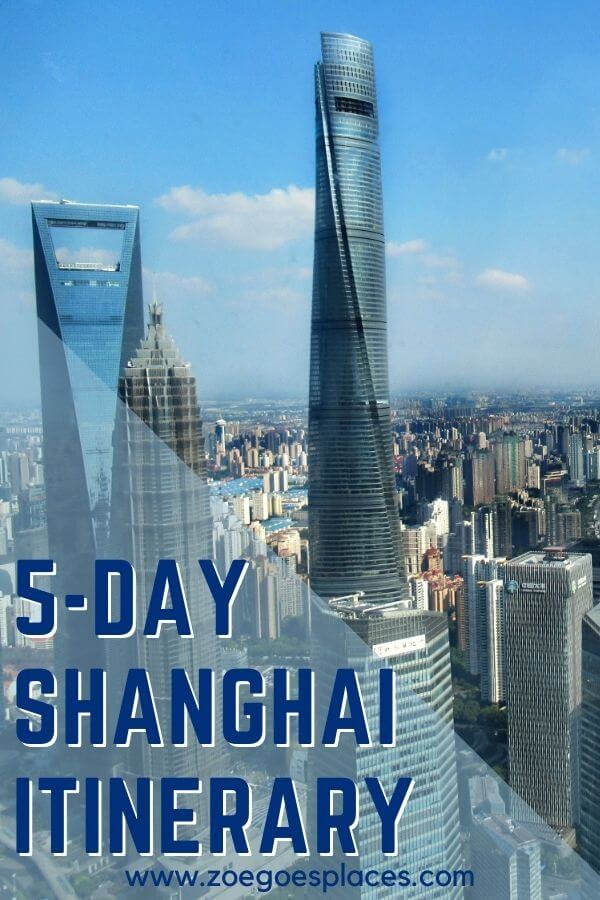
This sounds like a great Itinerary. I find it interesting that such a large city is mostly cash based.
90% of the locals don’t carry a single cent of cash. They scan QR code with their phone to pay. While for foreigners without access to this app, it’s cash only in most stores. Stores catering to tourists do accept credit card.
Yes, this is true. Pretty much everyone uses WeChat for payment, but you need a Chinese mobile number to access the app. So for tourists, it is pretty much cash only. Card payments are accepted in some places, but it’s just easier to have cash as you never know if they will accept Visa/Mastercard/have a working card machine. Apple pay can be used in some places, but Google Pay doesn’t work with the ban on Google.
Such an in-depth guide! You really haven’t missed anything out and it will certainly help me plan my trip to Shanghai! Thanks so much and keep up the great work 🙂
Thank you, glad you found it useful! Hopefully we will all be back travelling freely soon!
A few comments: I felt the Shanghai Art Museum to be more interesting than the Science Museum. You did not mention the MagLev train. If you qualify, the Executive Lounges at China’s international hotels (e.g., Marriott) put anything in America to shame. The tidal bore (Silver Dragon) in Hangzhou at the river is not to be missed, if you time it right.
Ah I should definitely add the MagLev train, there’s not many places in the world you can travel at those speeds (and it feel like a pleasant ride all the same). Thanks for letting me know, I’ll consider these next time I update the post.
I lived in Shanghai for eight years; one in Pudong and the rest in Puxi. This was a very good recap for the city, and the comments are also good. Thank you!
Thank you, glad you enjoyed the post!
Does tourists need to use Ali pay to make payment in Shanghai ? Can foreigners pay with cash in most shop frequent by local?
I haven’t been since before 2020 but I had no problems using cash then and even had free withdrawals from ATMs. It might be worth checking out some forums to see if it’s changed in the last few years especially with the lack of international visitors.
Many thanks for this very interesting article about your 5 days itinerary in Shanghai.
Perhaps is our online route planner for the Shanghai metro (subway) usefull as well:
https://www.metrocazar.com/shanghai/
Very helpful, thank you!
Going next week and I’m quite nervous! How is english speaking with the locals fare? Last time I was in Shanghai was 20 years ago.
Excited to see shanghai!
I found far fewer people spoke English than I expected, especially in restaurants/shops etc. I’d recommend finding a good offline/non-Google translation app as that’ll help a lot, or using a tour guide, walking tours etc.
This 5-day itinerary looks like a great way to see the best of Shanghai, from historical sites and museums to delicious food and shopping – I don’t know where I’m going to start but I’m looking forward to planning my trip using this guide!
Is the Muslim Friday market really open for business? I read that it has been closed down after covid.
Hi Liza, I believe it has closed down permanently. I tried to leave in places that had closed over the pandemic in the hope they might open again with the return of tourism, but seems that’s not the case here, I will update as soon as I can. Thanks, Zoe
Hey Zoe, I’ve just returned home from China and this is a great itinerary for Shanghai 🙂 Just on the spitting – you’re right about it not being very common in Shanghai. However, if you go to any smaller Chinese city it is still very prevalent. What did you think of Disneyland? I wasn’t sure about going there alone!
Hi Mike, thanks for the feedback, always nice to hear. That’s interesting to know, I haven’t visited any of the smaller Chinese cities since way back in 2010 but it was very widespread then. Always love a Disney trip, sometimes you just have to get your cliche tourist hat on for a day! Thanks, Zoe
Great Itinerary, simple and sweet. Found helpful. Thanks for sharing !!!